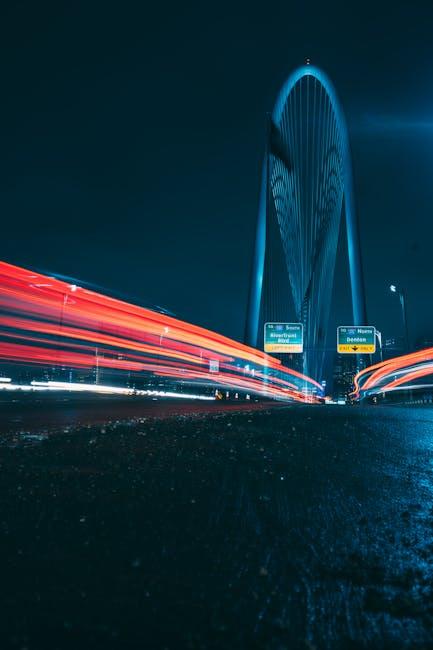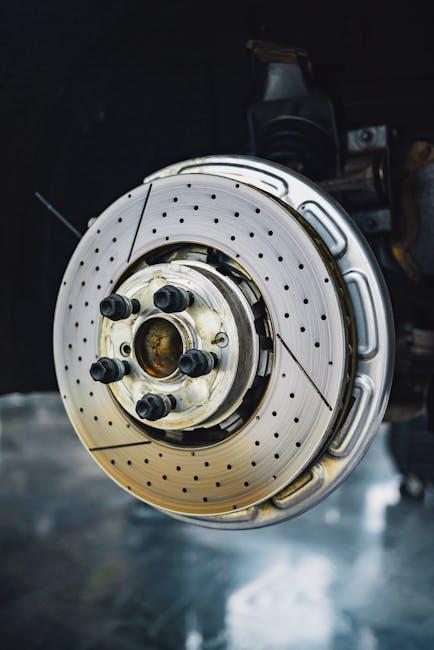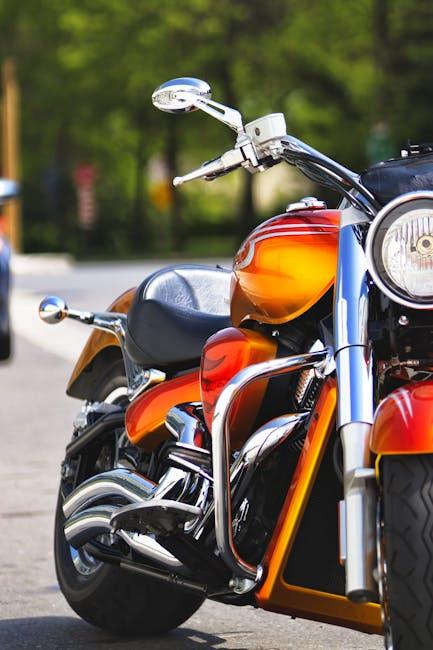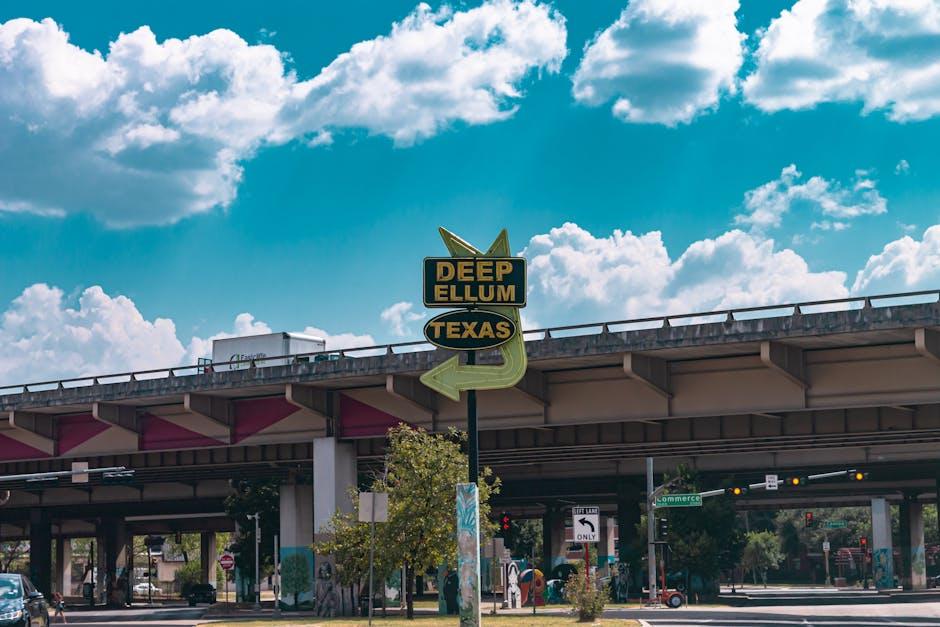In the sprawling urban landscape of Dallas, where the hum of engines and the constant ebb and flow of vehicles paint a daily symphony of motion, the city’s traffic is more than just a commuter’s challenge—it’s a silent sculptor of vehicle longevity. Among the many components silently absorbing the strain of stop-and-go congestion, brake systems bear a unique burden. As traffic snarls weave their way through Dallas’s streets and highways, the subtle yet persistent impact on brake wear unfolds, revealing an intricate interplay between city life and automotive endurance. This article delves into how Dallas traffic patterns influence brake wear, offering insights into the hidden costs of navigating one of America’s busiest urban grids.
Table of Contents
- Understanding the Unique Traffic Patterns in Dallas and Their Impact on Braking
- Analyzing Brake Wear in Stop-and-Go Conditions of Urban Commutes
- The Role of Heat and Friction in Brake Component Degradation
- Identifying Signs of Accelerated Brake Wear from Dallas Traffic Stress
- Maintenance Tips to Extend Brake Life Amid Heavy City Traffic
- Choosing Brake Materials Best Suited for Frequent Urban Stopping
- Q&A
- Closing Remarks

Understanding the Unique Traffic Patterns in Dallas and Their Impact on Braking
The bustling streets of Dallas present a distinct challenge for drivers, with traffic patterns that are anything but ordinary. From the morning rush hours in downtown to the steady flow near suburban shopping centers, frequent stop-and-go conditions prevail. This constant cycling between acceleration and braking causes significant wear on brake components, noticeably more than in cities with smoother traffic flows. Additionally, traffic signals that often lead to unexpected stops require drivers to remain alert and on their brakes more often than anticipated.
Key factors contributing to brake wear in Dallas traffic include:
- Frequent congestion: Slow-moving traffic leads to repeated brake application.
- High commuter volume: Increased vehicles on highways result in short but constant braking intervals.
- Complex intersections: Numerous traffic lights and roundabouts cause unpredictable stops.
- Urban construction zones: Erratic traffic flow due to lane shifts puts additional stress on brakes.
| Dallas Location | Average Daily Stops | Brake Wear Impact |
|---|---|---|
| Downtown Core | 150 | Severe |
| Highway 75 Corridor | 100 | Moderate |
| Suburban Shopping Areas | 80 | Mild |

Analyzing Brake Wear in Stop-and-Go Conditions of Urban Commutes
Urban traffic in Dallas subjects drivers to persistent stop-and-go situations, which significantly accelerates brake wear compared to steady highway cruising. Every time a vehicle comes to a halt and then starts again, the brake system experiences friction and heat cycles, wearing down pads and rotors at a faster rate. This rapid repetition not only shortens the lifespan of brake components but also requires more frequent maintenance checks to ensure optimal safety and performance. Among the contributing factors, high traffic density and numerous traffic signals stand out as primary causes of this increased wear.
To better understand the impact, consider the average number of stops per mile and the estimated brake wear per stop for different Dallas commute routes:
| Commute Route | Stops per Mile | Brake Wear per Stop (%) | Estimated Brake Life (Miles) |
|---|---|---|---|
| Downtown Loop | 10 | 0.25 | 4,000 |
| Suburban Main Road | 6 | 0.18 | 7,500 |
| Highway-to-City Entry | 3 | 0.10 | 15,000 |
- Frequent braking cycles lead to heat buildup, causing premature brake fade.
- Stop-and-go traffic requires constant pressure adjustments, stressing brake components.
- Urban terrain with uneven surfaces can exacerbate wear rates.

The Role of Heat and Friction in Brake Component Degradation
Every time you tap the brakes in the relentless Dallas traffic, an invisible battle unfolds between heat and friction within the brake system. The more prolonged and frequent the stopping, the greater the heat generated, which accelerates wear on critical components like brake pads and rotors. This constant thermal stress can lead to warping, glazing, and in extreme cases, brake fade, jeopardizing both performance and safety. The tiresome stop-and-go patterns typical in Dallas don’t give these parts much time to cool down, intensifying degradation faster than you might realize.
Understanding the dynamics helps pinpoint what exactly suffers during those endless red lights. Friction is the hero of safe stops but also the villain of component longevity. Here’s a quick look at how heat and friction combine forces to wear down brake parts:
- Brake Pads: Suffer from surface glazing and thinning, reducing grip efficiency.
- Rotors: Prone to warping due to uneven heat distribution, leading to vibration.
- Calipers and Hardware: Experience premature seal and piston wear from heat expansion.
| Component | Heat Effect | Friction Impact |
|---|---|---|
| Brake Pads | Glazing and surface hardening | Material thinning |
| Rotors | Warping and uneven wear | Grooving and scoring |
| Calipers | Seal degradation | Piston sticking |

Identifying Signs of Accelerated Brake Wear from Dallas Traffic Stress
Dallas drivers often find themselves in stop-and-go traffic, which can dramatically increase the stress on brake components. One of the first indications that your brakes are wearing faster than normal is a squealing or screeching noise when you apply the brakes. This sound signals that the brake pads are nearing the end of their lifespan. Additionally, you might notice a vibration or pulsation in the brake pedal, signaling uneven wear or potential damage to the brake rotors. In extreme cases, increased stopping distance and the illumination of the brake warning light are clear signs that accelerated wear is affecting brake performance.
Recognizing these early clues can prevent costly repairs and ensure your safety on the roads of Dallas. Below is a quick reference guide to common symptoms with potential causes:
| Symptom | Possible Cause | Recommended Action |
|---|---|---|
| Squealing Noise | Worn Brake Pads | Replace Pads Promptly |
| Brake Pedal Vibrations | Warped Rotors | Rotor Resurfacing or Replacement |
| Longer Stopping Distances | Brake Fluid Issues or Pad Wear | Brake System Inspection |
| Brake Warning Light | Sensor Alert or Fluid Low | Immediate Diagnostic Check |
- Frequent brake inspection: Crucial in high-traffic urban areas
- Listening for unusual sounds: Early detection can prevent accidents
- Monitoring pedal feel and responsiveness: Key to recognizing mechanical issues

Maintenance Tips to Extend Brake Life Amid Heavy City Traffic
To maximize your brake lifespan in the relentless stop-and-go rhythm of Dallas streets, adopting mindful driving practices is essential. Smooth acceleration and gentle deceleration reduce the strain on brake pads, minimizing premature wear. Whenever possible, anticipate traffic patterns ahead to avoid constant braking — coasting to stops rather than sudden halts saves your braking system from excessive heat and friction. Additionally, selecting routes with less traffic and fewer stoplights can make a substantial difference in brake durability over time.
Routine maintenance shouldn’t be overlooked in the urban grind. Regularly inspect brake components for signs of uneven wear or lowered fluid levels, and replace worn parts before they cause damage to other elements. Below are some key maintenance tips to keep your brakes performing at their peak:
- Check brake pads every 10,000 miles to detect thinning early.
- Flush brake fluid annually to maintain responsiveness and prevent corrosion.
- Clean brake dust off rotors frequently to reduce abrasive damage.
- Listen for unusual noises such as squeaking or grinding alerts.
| Tip | Benefit | Recommended Interval |
|---|---|---|
| Brake pad inspection | Prevents unexpected failures | Every 10,000 miles |
| Brake fluid flush | Maintains stopping power | Annually |
| Cleaning brake dust | Reduces rotors wear | Monthly |
| Noise monitoring | Early problem detection | Ongoing |

Choosing Brake Materials Best Suited for Frequent Urban Stopping
Urban driving, especially in bustling cities like Dallas, demands brake materials that excel under frequent stop-and-go conditions. The constant need to decelerate from traffic lights, pedestrian crossings, and congested intersections generates intense heat and stress on braking components. Selecting brake pads made from ceramic composites can be particularly advantageous due to their superior heat dissipation and quieter operation. Conversely, metallic compounds offer excellent durability but may cause increased noise and faster rotor wear. When embracing city driving, understanding these trade-offs is essential for maintaining optimal brake performance without compromising safety or comfort.
To navigate the unique challenges posed by Dallas traffic, consider the following brake material characteristics:
- Heat resistance: Crucial for preventing brake fade during constant stops.
- Durability: Ensures longevity despite frequent application.
- Noise reduction: Enhances driving comfort in a noisy urban environment.
- Dust levels: Affects wheel cleanliness and overall maintenance.
| Material | Heat Resistance | Durability | Noise Level | Urban Suitability |
|---|---|---|---|---|
| Ceramic | High | Medium | Low | Excellent |
| Metallic | Medium | High | High | Good |
| Semi-metallic | Medium | Medium | Medium | Average |
Q&A
Q&A: How Dallas Traffic Affects Brake Wear
Q1: Why focus on Dallas traffic when discussing brake wear?
A1: Dallas is notorious for its heavy traffic and frequent stop-and-go conditions. These driving patterns place unique stresses on vehicle brakes compared to smoother highway driving, making it an ideal case study for understanding brake wear in urban settings.
Q2: What is it about stop-and-go traffic that accelerates brake wear?
A2: Each time a driver presses the brake pedal, the brake pads clamp down on the rotors to slow the vehicle, generating friction and heat. Frequent braking means the pads and rotors are constantly rubbing, causing faster erosion of the brake components compared to steady-speed driving.
Q3: How does Dallas traffic specifically intensify this process?
A3: Dallas traffic often involves sudden stops at traffic lights, heavy congestion during rush hours, and sporadic acceleration — all conditions that demand repeated braking. The city’s sprawling layout and numerous intersections exacerbate this pattern, increasing the frequency and intensity of brake use.
Q4: Are there certain areas in Dallas where brake wear is worse?
A4: Yes, busy arterial roads like Central Expressway and Woodall Rodgers Freeway, along with densely populated downtown intersections, tend to produce the most stop-and-go scenarios. Drivers navigating these zones are more likely to experience accelerated brake wear.
Q5: What signs should Dallas drivers watch for that indicate brake wear?
A5: Common symptoms include a squealing or grinding noise when braking, reduced responsiveness, longer stopping distances, and a vibrating brake pedal. Given Dallas traffic’s demands, it’s wise to have brakes inspected regularly, even if no obvious problems arise.
Q6: Can Dallas drivers take steps to reduce brake wear despite heavy traffic?
A6: Absolutely. Techniques such as maintaining a safe following distance, anticipating stops to brake gently, and coasting when possible can reduce excessive braking. Regular maintenance and timely replacement of brake components also extend their lifespan.
Q7: How does Dallas traffic impact vehicle maintenance costs overall?
A7: The increased brake wear leads to more frequent repairs and replacements, raising ownership costs. Dallas drivers should budget for these expenses and schedule regular brake inspections to avoid costlier damage down the road.
Q8: In summary, why is understanding Dallas traffic’s impact on brakes important?
A8: Awareness helps drivers adapt their habits, plan maintenance, and improve safety. By recognizing how the unique traffic patterns in Dallas accelerate brake wear, vehicle owners can better protect their cars and wallets while navigating the city’s busy roads.
Closing Remarks
In the bustling streets of Dallas, where stoplights dictate the rhythm of daily commutes, the relentless ebb and flow of traffic leaves a subtle, yet undeniable mark on your vehicle’s brakes. Understanding how this urban dance impacts brake wear not only helps drivers anticipate maintenance needs but also encourages safer and more mindful driving habits. So next time you find yourself navigating the crowded highways or inching through downtown congestion, remember: each stop and start is a small chapter in the story of your brakes’ journey. Being aware today can lead to smoother rides and safer travels tomorrow.
